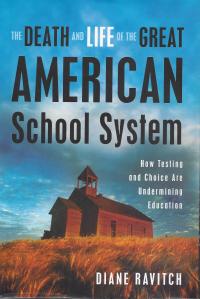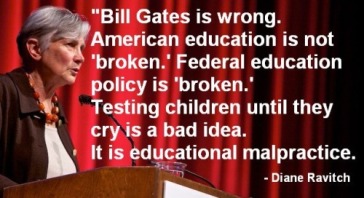One of Canada’s provincial premiers, Brad Wall of Saskatchewan, has waded into the Catholic Separate School question and brought the issue of school choice, once again, to the fore. In Late April 2017, he announced that, in direct response to a recent Court of the Queen’s Bench decision in the controversial Theodore Catholic School case, the province would be invoking the Charter “notwithstanding” clause to support the right of non-Catholics to attend the province’s Catholic schools.
 A tiny local dispute, as is often the case, erupted into a full-blown debate over the right of parents to choose the best school for their children. It was sparked by the decision of 42 multi-denominational parents in the village of Theodore, fifteen years ago, to resist a public school closure and instead create a Catholic School Division and open their own publicly-funded Catholic school.
A tiny local dispute, as is often the case, erupted into a full-blown debate over the right of parents to choose the best school for their children. It was sparked by the decision of 42 multi-denominational parents in the village of Theodore, fifteen years ago, to resist a public school closure and instead create a Catholic School Division and open their own publicly-funded Catholic school.
Premier Wall staked out his ground in defense of the right of parents to school choice encompassing public, separate and faith-based schools. It was a courageous decision given the complexity of the issue and the passions aroused by the Catholic question in public education.
Sorting out such a thorny educational-constitutional issue should not be left to the lawyers because it has far-reaching implications for parental school choice far beyond Saskatchewan. That is why The National Post invited me to take a much closer look at the whole controversy.
The court decision to end funding for non-Catholics to attend such schools had great potential for massive disruption. Some 10,000 students and their parents province-wide were left in limbo facing the prospect of being forced out of their Catholic schools.
The Saskatchewan Catholic schools dispute is, for better or worse, a critical “test case” that may well determine the fate of the Catholic school option in Saskatchewan and perhaps elsewhere. It’s also about far more than the funding of Catholic schools in that province. School choice in Saskatchewan, as in Alberta and Ontario, rests, in many ways, on having parallel public and separate school systems, both in English and in French. Such options, freely accessible to everyone, provide more choice than is commonly recognized.
 In spite of what look from the outside like uniform bureaucratic structures and curricula, such denominational and language options do allow for variations, particularly in core philosophy, academic focus, and student discipline. One out of five Saskatchewan students (21.1 percent), 22.9 per cent of Alberta students, and 30.3 per cent of Ontario students were enrolled in fully-funded, principally Roman Catholic schools, in 2009-10, the most recent data.
In spite of what look from the outside like uniform bureaucratic structures and curricula, such denominational and language options do allow for variations, particularly in core philosophy, academic focus, and student discipline. One out of five Saskatchewan students (21.1 percent), 22.9 per cent of Alberta students, and 30.3 per cent of Ontario students were enrolled in fully-funded, principally Roman Catholic schools, in 2009-10, the most recent data.
Separate religiously oriented schools within the public education system not only offer choice but a measure of competition. Students and parents can opt for schools with provincially-approved religious instruction as an alternative to the predominantly secular, non-denominational public schools.
Saskatchewan is not the only province where the religious walls have recently come down. In many Catholic school districts across the three provinces, the relaxing of strict religious expectations and admittance of non-Catholics (or students of different faiths) has effectively expanded the range of choice, since such schools are no longer available exclusively to more religiously oriented families.
 Alberta is hailed as Canada’s undisputed leader in the provision of a wide range of school choices. A February 2014 Fraser Institute report only bolstered that claim by demonstrating that Alberta offered six different publicly-funded options: regular public, francophone public, separate Catholic, separate francophone, separate Protestant, and charter schools. The report’s principal author Jason Clemens noted that “Alberta goes out of its way purposefully, strategically, to provide parents with choice not only within the public system but outside the public system.”
Alberta is hailed as Canada’s undisputed leader in the provision of a wide range of school choices. A February 2014 Fraser Institute report only bolstered that claim by demonstrating that Alberta offered six different publicly-funded options: regular public, francophone public, separate Catholic, separate francophone, separate Protestant, and charter schools. The report’s principal author Jason Clemens noted that “Alberta goes out of its way purposefully, strategically, to provide parents with choice not only within the public system but outside the public system.”
Next to Alberta and Ontario, Saskatchewan offers the most school options: regular public, public francophone, separate Catholic, and separate Protestant schools. The continued vitality of one of those options is imperiled by that Theodore school court decision.
School choice should not be simply taken for granted. The vast majority of Atlantic Canadians living in Nova Scotia, Newfoundland, and Prince Edward Island have only one real choice. Over 95% of all K-12 students in these three provinces are offered only one brand of school, the standard English Public School model. In New Brunswick, some 28% of all students attend Francophone schools, but their curriculum and program are, with a few exceptions, a French mirror image of the Anglophone version.
Atlantic Canada is, putting it bluntly, a “take it or leave it” public system where only more affluent families have an alternative, the odd private independent school and homeschooling, enrolling from 1 per cent to 3 per cent of the total student population. About 2,600 First Nations students in Nova Scotia (2.1%) do attend very small Mi’kmaw Education Authority (MK) schools in 13 different native communities. Fewer than 250 Nova Scotia students receive tax support to attend special schools for kids with severe learning disabilities.
 Public fears about charter schools in Alberta are fueled by defenders of the existing educational order— and appear to be not only irrational but unfounded. Under that province’s 1993 Charter School law, the numbers of publicly-funded charters are limited (to 15) and enrollments are capped, Introducing charter schools in the mid-1990s hardly proved destabilizing because the flow was restricted and only 1% of the student population were able choose them.
Public fears about charter schools in Alberta are fueled by defenders of the existing educational order— and appear to be not only irrational but unfounded. Under that province’s 1993 Charter School law, the numbers of publicly-funded charters are limited (to 15) and enrollments are capped, Introducing charter schools in the mid-1990s hardly proved destabilizing because the flow was restricted and only 1% of the student population were able choose them.
Giving parents and students more school choices and more variety in terms of alternative programs would not be ‘the end of the world.’ Students and parents in Canada’s largest urban school systems like Toronto, Edmonton and Vancouver, already have many school choice options and have “open school boundaries” allowing students to attend schools of their own choice. School district “boundary reviews” provoke an intense public outcry for good reason – the school board is dictating where your children are going to attend school.
School choice is gradually emerging as a fundamental human right for students and families. Choosing the best school for your child should not be so difficult or next-to-impossible without significant financial means. School systems benefit from being more open and responsive to a wider range of student needs and aspirations. Safeguards do need to be built-in to prevent a mass exodus and to provide some recourse in the case of under-performing schools.
Putting a stop to the removal of non-Catholics who have chosen to exercise their option of choosing an alternative to the ‘one-size-fits-all’ system is not only defensible, it’s advisable, especially in Saskatchewan. One can only hope that it derails any movement to further restrict parental choice in education.
What’s causing all the ruckus over the Saskatchewan separate school question? Who gains when provinces move to “one big English language system” for all? How fundamental is the right to parental choice in Saskatchewan as well as Alberta and Ontario? Should non-Catholics continue to have free, unimpeded access to Catholic separate schools? Wherein lies the danger of broadening the range of choice in our provincial school systems?





